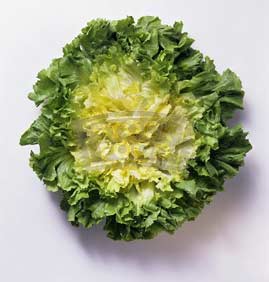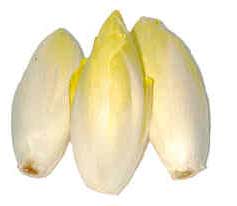Endive Juice and Its Health Benefits
 Endive Letuce
Endive Letuce
In our recent article we have examined the health benefits of lettuce juice. Endive is another vegetable, virtually belonging to the same group. It very much resembles lettuce, and to some degree it has the same nutritional value. The alternative names are escarole or chicory. In some areas of the US, this curly vegetable is referred to as chicory, while the word endive is being used exclusively for the winter-grown heads of Brussels Chicory. Brussels Chicory can be distinguished by its long creamy white leaves pressed one to another in a compact form.
Here we will address in more detail the former type – the true Endive. The Belgian variety is deficient in chlorophyll and also in some important mineral substances found in the full grown endive plant. The endive has dark-green, curly and serrated leaves. The green leaves are edible when young.
As a plant, the endive lettuce is closely related to the dandelion. It is of higher quality and there is a greater range of culinary possibilities than when considering the ordinary lettuce. Even within the endive family there are several species with slightly different nutritional and medicinal properties. The energetic value of endive is larger than that of lettuce – it is richer in proteins and sugars (in this case polysaccharide type of sugars necessary for the digestive system – learn the difference between various types of sugars here). Endive has less minerals than lettuce, but it is more abundant in vitamin C (17mg).
It has a bitter taste because it contains inulin. The therapeutic properties of inulin include acting as diuretic, stimulating the appetite and secretion of urine. (Note. The nutritional and health values of inulin are currently under debate. See here for details on the inulin controversy.) The delicate yellow marrow is the best part of endive. This part is also less bitter because it contains less inulin than the darker outer leaves.
Special note: If you want to eat endive raw, the bitter taste of endive can be moderated, for example by mixing it with potato or beetroot, with hard boiled eggs, vinegar sauce or lemon juice. The addition of fruits or seasoning herbs is also an option.
Endive is one of the richest sources of Vitamin A among the green vegetables.
When it comes to the therapeutic properties of endive juice, this plant has nutritional elements that are capable of strengthening our sight. Here, endive works very well in conjunction with carrot, parsley and celery juice to improve the optic and muscular system. Two or three cups a day of this juice combination can help improve eye sight and alleviate various problems with the eyes.
Here are some other possible juice combinations for eye sight improvement to be consumed daily:
- One or two cups of carrot, parsley, celery and endive juice,
- One or two cups of carrot juice,
- One or two cups of carrot, celery, spinach, and parsley juice
Carrot, celery, and endive combined are excellent for asthma problems, given that the root cause of it (mostly milk and sugars in the diet) has been permanently removed from the diet. Celery spinach and parsley combination with endive juice is good for anemia and coronary troubles and as a blood tonic. Endive juice regardless of the combination with other vegetable juices promotes the secretion of bile and thus it stimulates the normal function of liver and gall bladder.
Happy juicing!



Leave a comment